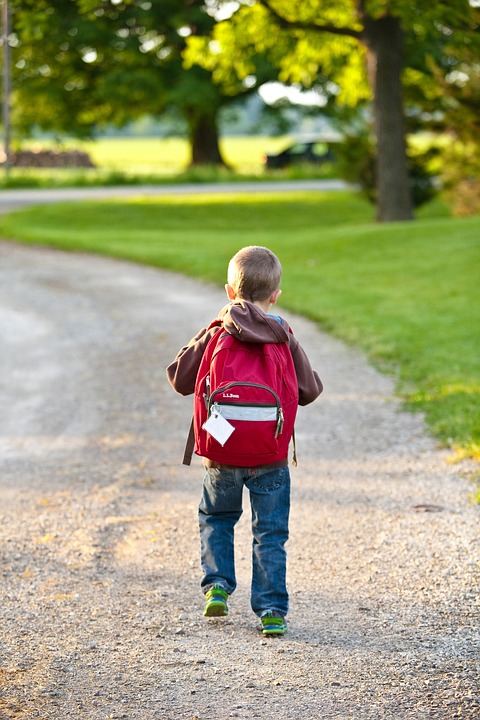One of the joys I get from treating children and adolescence in physiotherapy is finding out what their goals and aspirations are when they are older. Their futures are so bright and boundless. I love the creativeness and imagination they have when I hear what role they will have in this world. Despite the advancements in technology, you would think that the weight of their school books would be replaced by tablets and laptops. Instead, what I find common in a typical schoolbag are piles of books loaded on top of laptops, tablets, sports gear, etc. Not to mention the way in which they are carried.
A child’s backpack should not weight more than 15% of their bodyweight. Did you know that? That is the rule of thumb and yet come exam time or end of sport season, children are visiting the clinic with musculoskeletal pains eerily identical to an adult’s presentation.
A 2002 South Australian clinical trial published in the journal of Musculoskeletal Disorders explored the posture response to backpack loading in adolescence aged from 12 to 18 years. It showed a clear difference between standing postures loaded with a backpack against those unloaded. It found that regardless of where the backpack was positioned it resulted in a horizontal displacement of the participants, irrespective of age and gender with the largest forward movement produced at T7 (mid back). This is to counteract the heavy weight of the back pack that can pull a child backward. Furthermore, in 2010, a study explored the impact of these loads on the lumbar spine on MRI. It found significant changes in lumbar disc height or curvature when the child was instantly loaded with a backpack. Yet children are exposed to these changes on a daily basis.
There were several limitations to these studies but what it does highlight is that we need to think about what kind of future we want to set these children up with. Their physical well-being is just as valuable as the education they receive in these prime years.

The things we can do to improve your child’s spinal and musculoskeletal health include:
Cues for good posture – Can your child hold a good posture without a backpack? Are they able to maintain that posture under load? The cue for good posture I like to use is for the child to ‘imagine you have a puppet string pulling you up from the top of your head’. Can your child hold that posture for at least a minute? If the child shows signs of early fatigue, then there is a high chance that when loaded with a heavy backpack, they will be compensating with other body parts to uphold that weight.
Wear a backpack correctly- When worn correctly, the weight in a backpack is evenly distributed across the body with shoulder and neck injuries becoming less common. Utilise the compartments effectively – place heavier items closest to the centre of the back and avoid backpacks with tight, narrow straps that dig into the shoulders and can interfere with circulation and nerves. These types of straps can lead to tingling, numbness, and weakness in the arms and hand. Shoulder bags or carrying a backpack with one strap is obviously not ideal.
Lighten the load – Actually weigh the backpack that your child is carrying on a typical day. Again, it shouldn’t be more than 15% their body weight. If it is, work out a way with your child to avoid any unnecessary weight. Do you really need your laptop and tablet at the same time? Are there pdf or online versions of the textbook available or photocopies that can be made to minimise the weight? It might be worth the investment to purchase a second hand copy of the text books to leave in your child’s locker so that they don’t have to lug such heavy weights from school to home and vice versa.
Organisation – Encourage kids to use their locker or desk throughout the entire day, remove unnecessary items and homework planning! Work out with the child what homework they will be able to complete on the weekend and thus which books can come home and which one’s should be left at school
Set up their work station – Set up their desk and make sure it maintains the correct height as they grow. An organised desk means they can see what they have on there and what they need to bring back from school. Make their desk the centre point where school material come to and from, rather than the backpack that accumulates paper or the dining table where books and stationary collect dust.
Starting these good habits now can ensure a happy and healthy spine for your child when they enter adulthood and the inevitable work force.
If you have any questions after reading this article or have had your child complain of pain from their back pack, please do not hesitate to contact Lifecare Cottesloe Physiotherapy on (08) 9384 3269 book an appointment online for an assessment.
1. Grimmer K, Dansie B, Milanese S, Pirunsan U, Trott P. (2002). Adolescent standing postural response to backpack loads: a randomised controlled experimental study. BMC Musculoskeletal Disorders. 3(10). 2. Brackley HM, Stevenson JM, Selinger JC. (2009). Effect of backpack load placement on posture and spinal curvature in prepubescent children Work. 32(3):351-60.
